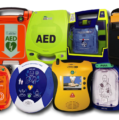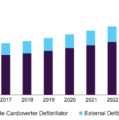

Doctor urges people to learn CPR to help the needs
GlobalNews December 18, 2019 AED Malaysia

CHARLOTTESVILLE, Va. (CBS19 NEWS) — An emergency medicine physician says bystanders can play a huge role in saving the lives of people who suffering from cardiac arrest outside of a hospital.

William J. Brady, MD, an emergency medicine physician at the University of Virginia Health System, recently co-authored an article highlighting steps taken by anyone to help.
According to the research, only 8 percent of people would survive a cardiac arrest outside of a hospital, but that can be significantly increased if a bystander knows the signs of cardiac arrest and performs simple lifesaving procedures, mainly cardiopulmonary resuscitation or CPR.
“Early emergency care by the bystander, long before emergency medical providers arrive, can save a life. The care is referred to as ‘pre-arrival care,'” said Brady. “This pre-arrival care is as important as more advanced care by EMTs, nurses and doctors once trained providers are available.“
He says the first step is just quickly recognizing the signs of cardiac arrest.
The article cites the American Heart Association and other medial groups that say “bystanders should suspect cardiac arrest and begin CPR whenever a person is unresponsive and not breathing normally.“
Some common signs of a heart attack include pressure or tightness in the chest or arms, nausea or abdominal pain, shortness of breath, cold sweat, or lightheadness and sudden dizziness. However, this is not a complete list of all of the possible signs people can look for when a person becomes unresponsive in a public area.
By more quickly recognizing the signs of cardiac arrest, quickly call to 911 and CPR can be begun.
The release says a 2010 review of more than 10,000 out-of-hospital cardiac arrest cases found 22.1% of patients who got pre-arrival care, including CPR performed by a bystander, survived their condition, compared to just 7.8% of patients who did not.
Bystanders can be trained in compression-only CPR or in the use of an AED or defibrillator, both of which can be used to increase a patient’s survival chances .
Brady has helped lead an effort to install hundreds of AEDs across UVA Grounds, which has twice earned the university a HEARTSafe Campus award from the National Collegiate EMS Foundation.
The release says a 2018 study of more than 50,000 out-of-hospital cardiac arrests found 66.5 percent of people who were treated with an AED by a bystander survived, compared to 43 percent of people who were resuscitated by an emergency crew.
Brady wrote in the article that the chances of survival for a person facing an out-of-hospital cardiac arrest decrease by 7 to 10 percent for every minute without some form of CPR or the use of an AED.
However, the release notes that a major barrier for bystanders to provide any aid is a lack of training, and Brady estimates just 2.4 percent of Americans receive CPR training annually.
He and the article’s co-authors say one way to boost the number of people who get that training would be to offer shorter training sessions, such as a 4-minute training session at a CPR kiosk in a public location or short training videos.
Brady also says he hopes another option that will soon be available in the area will help boost the number of people with training: a smartphone app that can notify volunteer users of a person suffering a cardiac arrest nearby in a public location.
Source: cbs19news.com








